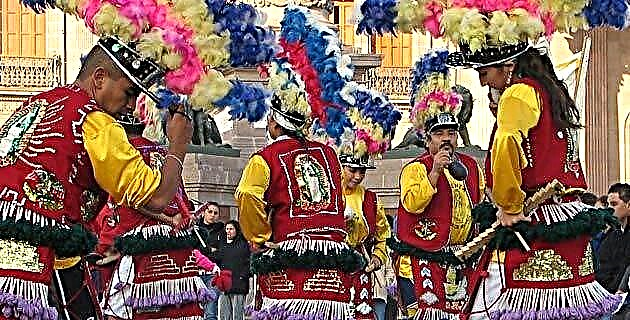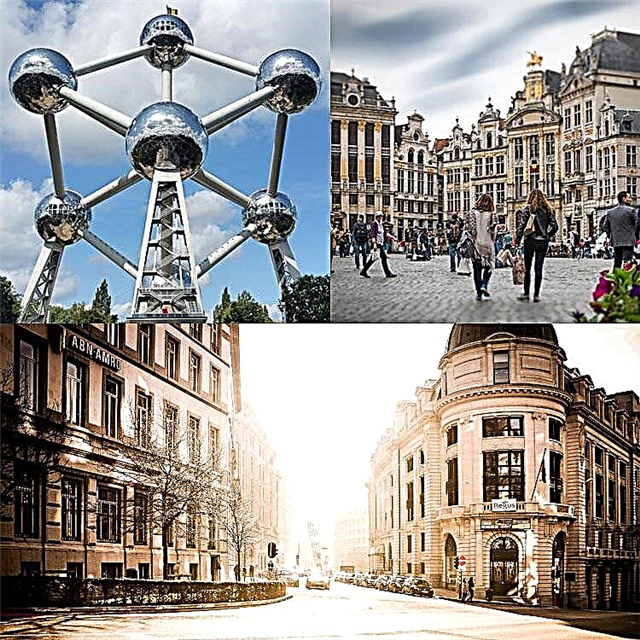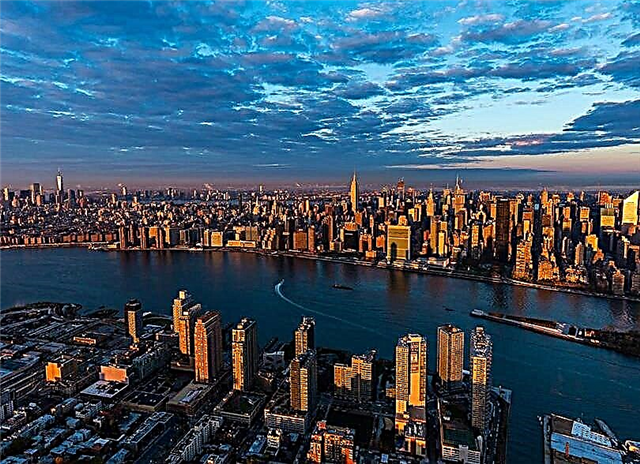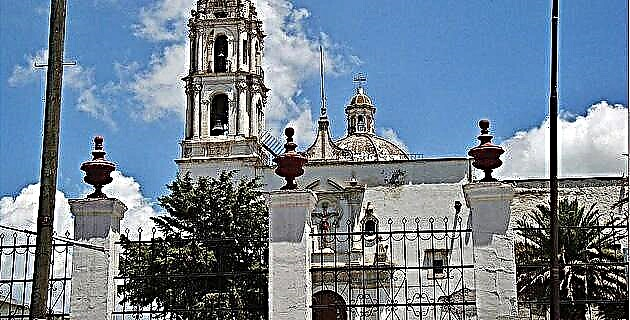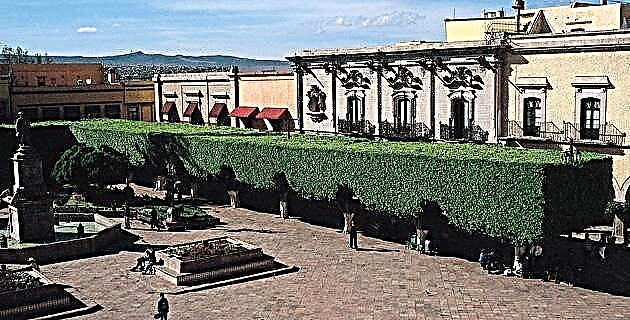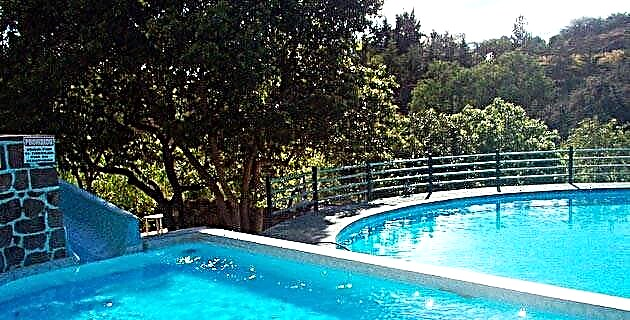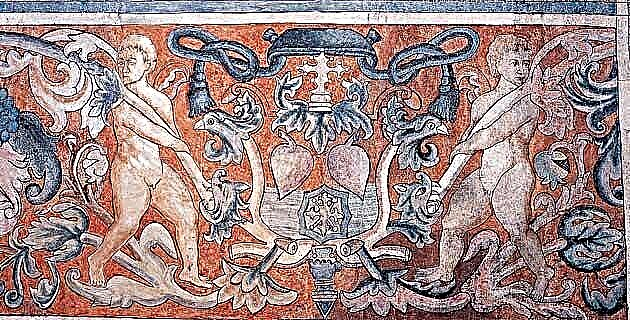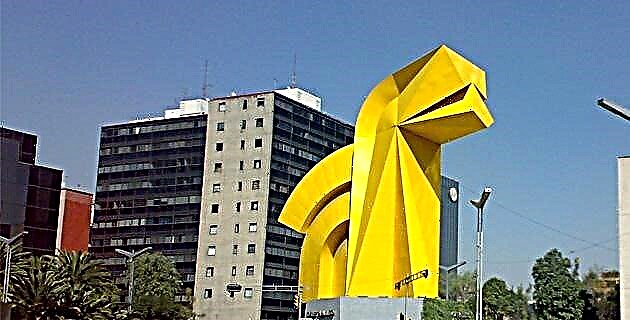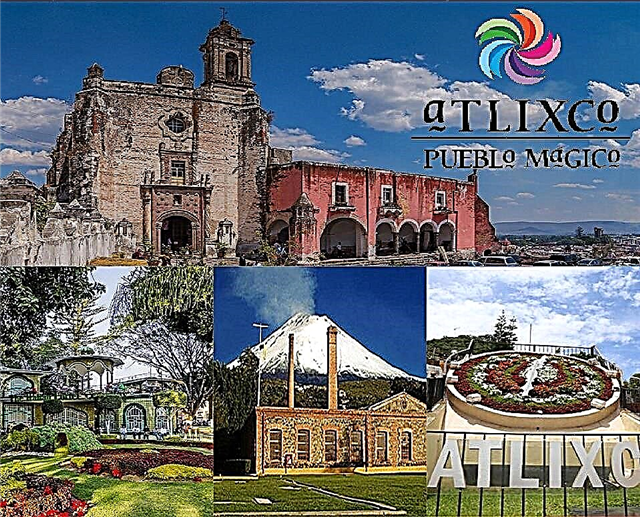Atlixco is a Magic Town Poblano to get to know with enough time, stopping at its beautiful constructions and participating in its charming celebrations. This comprehensive guide will help you get there.
1. Where is Atlixco?
Heroica Atlixco, also called Atlixco de las Flores, is a city and municipal seat of Puebla located in the central-western sector of the state. The municipality of Atlixco borders the municipal entities of Tianguismanalco, Santa Isabel Cholula, Ocoyucan, San Diego la Mesa Tochimiltzingo, Huaquechula, Tepeojuma, Atzitzihuacán and Tochimilco. The city of Puebla is located just 31 km from Atlixco. The town was named "Heroic" for the Battle of Atlixco, in which the republican forces defeated those of the Second Empire on May 4, 1862, preventing the arrival of imperialist reinforcements for the decisive Battle of Puebla, which took place today following.
2. How did the town arise?
400 years before the arrival of the conquerors, the Atlixco territory was inhabited by Chichimecas and Xicalancas, ruled from Tenochtitlan. In 1579, the Spanish founded the Villa de Carrión, Atlixco's original name, which quickly became an important agricultural production center due to the fertility of the soil and the good climate. The title of city was granted in 1843 and in 1862 the Atlixquenses covered themselves with glory, repelling the forces of Leonardo Márquez that were going to Puebla to reinforce the French. The recognition of Ciudad Heroica came in 1998 and in 2015 Atlixco was declared a Magic Town.
3. What climate does Atlixco have?
Atlixco has a pleasant spring climate throughout the year. The annual average temperature is 19.4 ° C and the hottest month is May, with 21.4 ° C, while the coldest month is January, when it is, on average, 17.1 ° C. The rainy period runs from June to September, raining less in May and October and much less in April and November. Between December and March there is practically no rain.
4. What are the attractions of Atlixco?
Atlixco is a Magical Town to enjoy admiring its architecture and to have fun ad nauseam at its parties and festivals. In a basic tour of the architectural landscape of Atlixco you cannot miss the Municipal Hospital of San Juan de Dios and its Pinacoteca, the Ex Convent and Church of La Merced, the Church of La Soledad, the Ex Convent and Church of San Agustín, the Palace Municipal, the Ex Convent and Church of Carmen, the Convent of San Francisco, the Church of Santa María de La Natividad and the House of Science. The great fiestas and festivals of Atlixco are the Huey Atlixcáyotl, the Atlixcayotontli, the Celebration of the Three Kings, the Illuminated Villa and the Festival of the Skulls. The natural emblem of the town is the Cerro de San Miguel and other places of interest that must be visited are the spas, the Cabrera Nurseries and the local archaeological sites. In the vicinity of Atlixco, Huaquechula and Tochimilco stand out.
5. What can I see in the Municipal Hospital of San Juan de Dios and its Pinacoteca?
This hospital center opened its doors in 1581 to attend to the population and the pilgrims who stopped in Atlixco, being one of the oldest hospitals in America. It is a beautiful two-story house with typical Spanish colonial architecture, with a central patio and wide arcades on the ground floor. Like several hospitals in the Hispanic world, it bears the name of San Juan de Dios, the Portuguese nurse who died in 1550, who distinguished himself for his socio-sanitary work. The hospital is home to an art gallery in which paintings allusive to the life of Saint John of God and other paintings of interest are exhibited.
6. What is the Ex Convent and Church of La Merced like?
The facade of the temple of La Merced is a magnificent work of the Baroque, in which four Solomonic columns stand out that frame two niches with two Mercedarian saints. The door is tri-lobed and is decorated with plant motifs and angels. The interior of the church is itself a picture gallery, with paintings such as Baptism of San Pedro Nolasco, Virgin of Dolores, Saint Felix of Valois and Sto Juan de Mata, some by local 18th century artist José Jiménez. There is also a mural dedicated to the Virgin of Mercy with the Child in her hands and San Joaquín, Santa Ana, San José, San Juan Bautista, San Miguel, San Rafael and other characters. On the left side of the nave there are three arcades that gave way to the conventual area, with a simple patio, a stone fountain and other components.
7. What is in Cerro de San Miguel?
It is the natural emblem of Atlixco, being also called Popocatica or "little hill that smokes" and Macuilxochitpec, which means "hill of the five flowers." From its viewpoints there are splendid views of the town and the surrounding landscapes and at its top is the Chapel of San Miguel Arcángel, an 18th century construction painted yellow and white, secured by two buttresses. Inside the chapel there is a very old stone pulpit and a neoclassical altarpiece. In September, the famous festival called Huey Atlixcáyotl or Fiesta Grande de Atlixco takes place on the esplanade of the hill.
8. What is the Huey Atlixcáyotl?
This festival called Huey Atlixcáyotl or Fiesta Grande de Atlixco is a Cultural Heritage of the State of Puebla. It used to take place on the last weekend in September, but now it lasts for a week. It brings together delegations from the 11 cultural regions of Puebla and was founded in 1965 at the initiative of the American ethnologist Raymond “Cayuqui” Estage Noel. Its main activity is folk dance, although it has been expanding and now includes exhibitions and flower contests, artisan shows, music by wind bands and other events. The dancers leave the town towards the Cerro de San Miguel esplanade, where the festive apotheosis takes place.
9. What is Atlixcayotontli like?
Every party has its appetizer and in the case of the Fiesta Grande de Atlixco, its aperitif is the Atlixcayotontli, or Fiesta Chica, which is normally celebrated during a weekend of the first fortnight of September, at least a couple of weeks before from the great Huey Atlixcáyotl festival. In Atlixcayotontli, dancers from three ethnogeographic regions of Puebla regularly participate, the Valle Region, the La Tierra Caliente Region and the Volcanoes Region, also called the Sierra Nevada Region. This short festive version also ends in the Plazuela de la Danza del Cerro de San Miguel, also including the Bailes de Convite and the Rito del Palo Volador.
10. What is the interest of the Iglesia de la Soledad?
This church located at the foot of Cerro de San Miguel was erected in the 18th century, being consecrated to San Diego de Alcalá, the 15th century missionary from Seville who became the first lay Franciscan to be canonized. The original façade was neoclassical in style, but a fire that occurred in the temple forced a restoration carried out in 1950, with the façade covered in white, gray and pink marble. It has two twin bell towers, with four clearings each and crosses, and above the choir window there is a semi-circular finish with another cross.
11. What is the attraction of the former Convent and Church of San Agustín?
This set was built during the last two decades of the 16th century by the Augustinian friars Juan Adriano and Melchor de Vargas. The main entrance is on the corner of Avenida Independencia and Calle 3, and is topped by an image of San Agustín. The covers are of baroque lines and on the walls of the cloister there are paintings dedicated to the Baptism, The Conversion and the Sepulture of San Agustín, the work of the Mexican painter Nicolás Rodríguez Juárez. Inside there is an image of the Holy Christ, which made the temple famous during the colony. The space occupied by the orchard was converted into the Benito Juárez Market.
12. What stands out in the Municipal Palace?
The Municipal Palace is a beautiful two-story building located in the historic center of Pueblo Mágico, with a beautiful central patio in the style of Spanish colonial houses. On the exterior and interior walls of the building and in the arcades of the central patio, murals have been painted alluding to different historical episodes and traditions of Atlixco. The frescoes cover the Atlixco Foundation, the History of Education in Mexico, the characters of Independence and the Reformation, the golden age of the Atlixco textile industry and more recent events such as the modern traditions of the Huey Atlixcáyotl and the Illuminated Villa.
13. What is the Ex Convent and Church of Carmen like?
The Carmelites arrived in Atlixco in 1589, although the construction of their convent took place during the first two decades of the 17th century. Due to its current proportions, it must have been the largest religious complex in the town, occupying two blocks. The main facade of the temple is in the Baroque style and is flanked by buttresses. The temple has a single nave, with a half-orange dome over the transept. After the Reform, the convent was stripped of its works of art and its premises were successively the Government Palace, the Palace of Justice, a prison and a barracks. Currently, in the conventual spaces the Carmen Cultural Center and an archaeological museum operate.
14. What is the interest of the Convent of San Francisco?
This convent complex located next to the Cerro de San Miguel is made up of a temple, cloister, bedrooms and orchard. The façade of the church is flanked by buttresses and the façade is made up of two Mudejar style bodies and Gothic branches. Inside the temple, the main altarpiece of two bodies stands out, with Marian paintings in gilt carving. On the walls of the cloister are the fresco paintings Prayer in the Garden Y Flagellation of Christ. In the old orchard there is a domed chapel with a baroque façade topped by two lions.
15. What's in the House of Science?
This educational museum located in a house in the historic center on Calle 3 Poniente, is dedicated to the scientific and technological strengthening of the general population, particularly children and young people from the most vulnerable social groups. It currently has rooms for Volcanology, Mathematics, Astronomy, Optics and Computing. In the Volcanology room is the mural The science, made by the Sonoran artist Jorge Figueroa Acosta, an allegory of great symbolism and chromatic richness on the scientific subject. The House of Science also has a room for scientific conferences.
16. Why is the Church of Santa María de La Natividad distinguished?
The Atlixco parish church is a building in which the yellow color stands out, which began to be built in 1644 at the initiative of Juan de Palafox y Mendoza, erected for the exclusive use of the Spanish faithful. In the highest part of the façade topped by three lobes, there is a Shield of the Spanish Crown magnificently made in the seventeenth century by indigenous people directed by Spanish artist friars; on the upper lobe is the royal crown. The temple has a single bell tower with two sections and two clearings on each of its four sides, with a small cupola at the end. Inside the Churrigueresque altars stand out and a superb decoration with religious paintings.
17. Where are the Cabrera Nurseries located?
The Cabrera de Atlixco neighborhood is the most flowery and colorful in the Pueblo Mágico because of the many nurseries that are found in it. The good weather makes Atlixco an ideal place for floral and ornamental plants, fruit trees and other species, which is why the town is called "Atlixco de las Flores". In the Cabrera nurseries you can admire violets, chrysanthemums, jacaranda trees, jasmine, petunias, lilies, roses, pansies and many other flowers. The flower frenzy in Atlixco is experienced during the Christmas Eve Fair, in which visitors buy more than 40,000 plants.
18. How is the Celebration of the Magi?
The feast of the kings is one of the most joyful in Atlixco, when tens of thousands of people fill the streets of the town. The most emotional moment is when Melchor, Gaspar and Baltazar, followed by floats, troupes and music bands, arrive at the zócalo around 8 PM. The children send their wish letters with balloons, a unique and colorful moment in the night of Atlético. The day closes with a beautiful fireworks display.
19. What is Villa Iluminada?
Between the end of November and January 6, the most important streets and buildings of Atlixco are copiously illuminated in a circuit of light and color that highlights the architectural beauty of the old buildings, as well as the emblematic figures and scenes of Christmas that they are built for the occasion. The show begins on Calle Hidalgo, from where it goes down to the zócalo and passes through different streets until it reaches the Ex Convento del Carmen, continuing through other arteries, ending at Parque Revolución. Villa Iluminada also includes artistic, cultural and sports events, as well as flower stands and a craft fair.
20. When is the Festival of Skulls?
Atlixco celebrates a whole festive and cultural day on November 2, Day of the Dead, which includes the Festival of Skulls, the Festival of the Dead and the elaboration of a monumental rug
, for the entertainment of more than 150,000 people who gather in the city. Villagers and tourists parade with catrinas and other skulls through a circuit of streets, to the sound of the music of wind bands. Likewise, some giant catrinas are exhibited in honor of their creator, the artist José Guadalupe Posada. The monumental allusive rug is an ephemeral work of art made in front of the Municipal Palace with several thousand marigold flowers.
21. What are the main spas?
Along with its excellent climate, Atlixco joins a group of spas and water parks for the enjoyment of the whole family. In the Pueblo Mágico and other nearby towns in the Atlixco municipality, such as Huaquechula and Metepec, there are spas with pools, water slides, camping sites and restaurants, where adults and children will enjoy entertaining days in very safe environments. Within the municipal limits are Ayoa Recreational Park, La Palmas, Axocopan, Agua Verde Sports Club, IMSS de Metepec Vacation Center, Villa Jardín Spa, Villa Krystal Green Spa, Villa del Sol Spa and Aqua Paraíso Spa.
22. Where are the main archaeological testimonies found?
To the west of Cerro de San Miguel, in an area known as Los Solares Grandes, there are three mounds that are believed to have been shrines. In the surroundings of the town there are different archaeological testimonies, such as cave paintings, pre-Hispanic toys, tombs, pieces of pottery and other remains that have not been sufficiently studied. It is believed that the chapel of San Miguel Arcángel, which also gives its name to the hill, was built on a pre-Columbian complex that had a temple in honor of Quetzalcóatl. In the museum of the former convent of Carmen, samples of Atlixco's pre-Hispanic past are preserved.
23. How are the crafts and local gastronomy?
One of the culinary symbols of the town is the Atlixquense consommé, prepared with chicken breast and chipotle chili and served with squares of quesillo and pieces of avocado. The locals also have a long tradition in the preparation of jerky, which is the basis of another of their emblematic dishes, the taco placero, with meat roasted over charcoal. At the end of July, the Cecina Fair is held in Atlixco, a symphony of textures, aromas, colors and flavors of dried meats. To sweeten themselves, the locals have the jeripa, a rice flour sweet, and the most popular drink is the rice atole. The main crafts are pieces of natural clay and polychrome clay, candles and embroidered shirts.
24. What can I see in Huaquechula?
30 km. To the southwest of Atlixco is the town of Huaquechula, which is distinguished by its festival of the Holy Cross, on May 3. The festivity begins with a wind band at each corner performing Las Mañanitas and then everything is joy, highlighting the dance of Los Topiles. Among the places of interest in Huaquechula are the former Franciscan convent of San Martín, a 16th century building, and several pre-Hispanic monuments known as "stones", such as La Piedra Máscara, La Piedra del Coyote and Piedra del Sol and Moon.
25. What are the attractions of Tochimilco?
This community is located 18 km. of Atlixco, at the foot of the Popocatépetl volcano and in it several colonial buildings can be distinguished. The most important is the former Franciscan convent and temple of the Assumption of Our Lady, built in the 16th century by Fray Diego de Olarte. The atrium wall has battlements, which gives the complex the appearance of a fortress, and the façade has Renaissance elements. Another interesting construction is the old and long aqueduct that fed the monastery from a nearby volcanic mountain. The offerings made in Tochimilco for the Day of the Dead are authentic works of popular art.
26. What are the best hotels?
Atlixco has an excellent and welcoming offer of accommodations, so that you feel totally comfortable and at ease in the Magic Town. La Esmeralda is endowed with beautiful gardens and the attention of its staff is first class. The rooms at Luna Canela Hotel and Spa have private jacuzzis on the terrace and the atmosphere is very clean and beautiful. Hotel Mansión El Conde is a quiet and beautiful place with a restaurant that offers Puebla and Italian food. Other good accommodation options in Atlixco are Club Campestre Agua Verde, Aqua Paraíso and Las Calandrias.
27. What about restaurants?
Las Calandrias, in the boutique hotel of the same name, offers an excellent buffet and its chiles en nogada are famous. La Perla is the restaurant of the Hotel Alquería de Carrión and specializes in seafood, with very reasonable prices. If you want a Mexican straight meal, you must go to Cielito Lindo, cheap and with good seasoning. La Esencia del Mediterráneo is small, cozy and its food is varied and tasty. Palmira Jardin Bar & Grill has beautiful gardens and a view of the Popo. In Beer City you can taste several craft beers accompanied by delicious snacks.
We hope you liked this guide and that you have the time to get to know all the charming attractions of Atlixco and to enjoy its best parties. See you very soon again.

